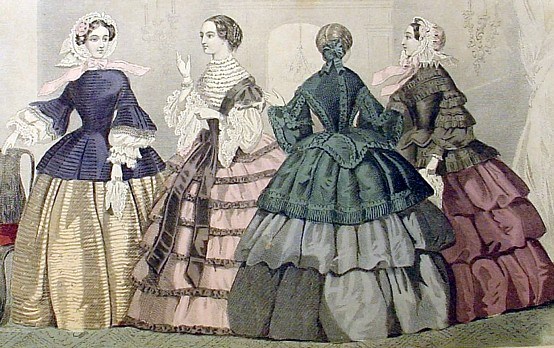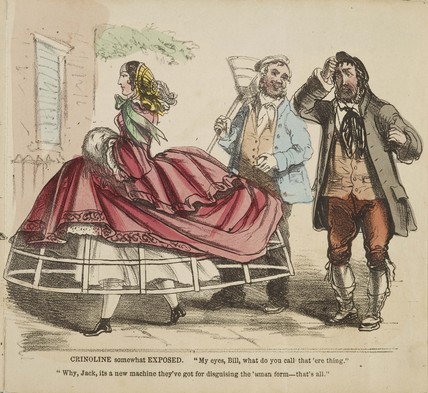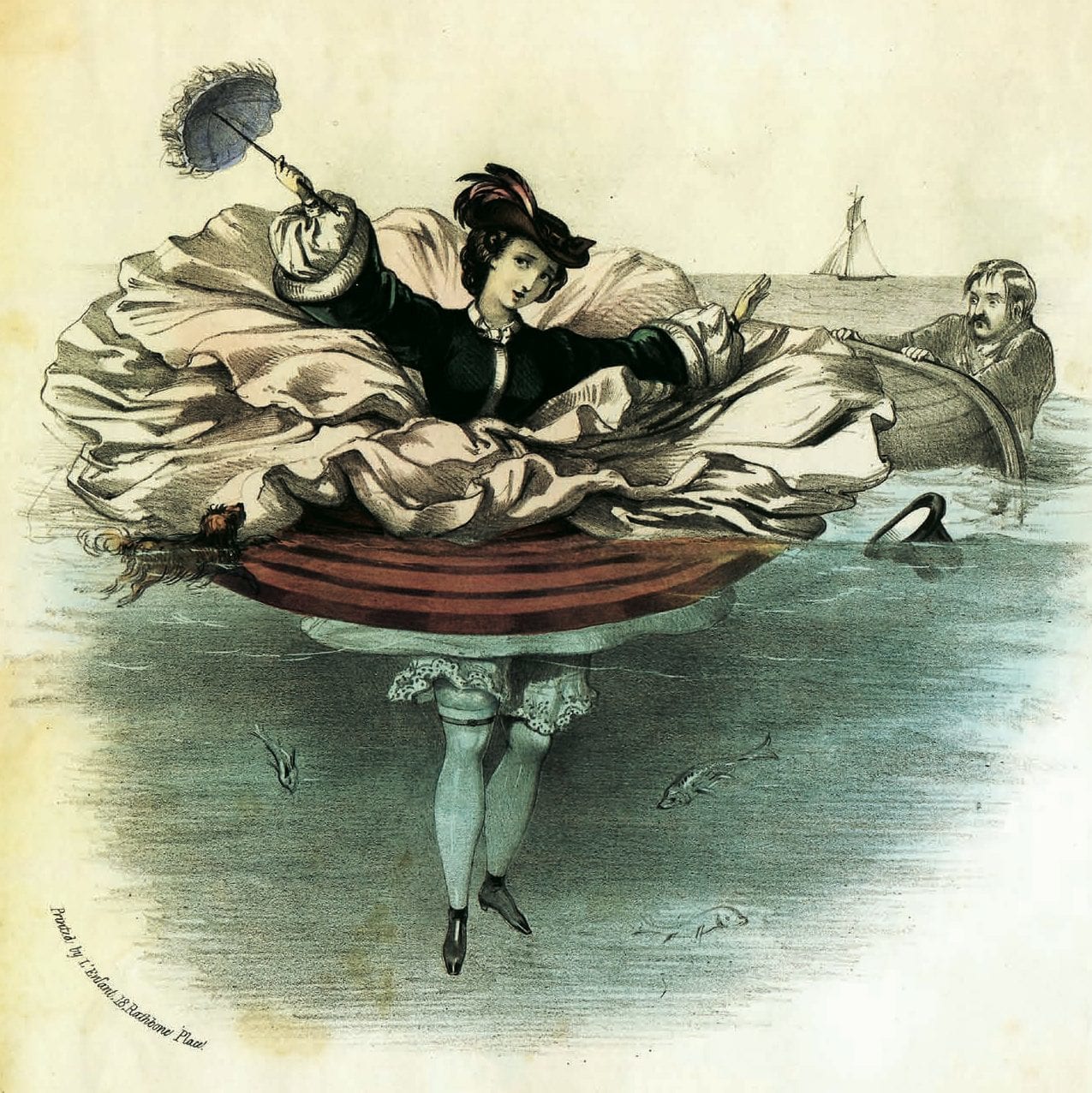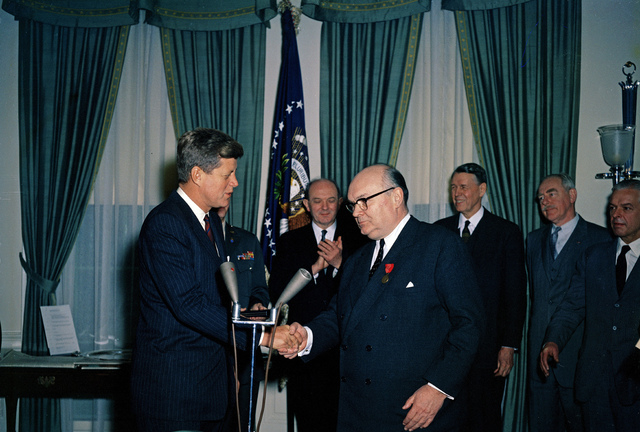Skirting Issues

by Catherine Scholar, First published for the November/December 2010 issue of Finery
The most visibly striking part of mid-19th century women’s dress is the wide, crinoline-supported skirt. Seriously, what little girl hasn’t dreamed of waltzing around a ballroom like Cinderella in a big, poofy dress? Skirts of this period (1830-1865, although the hoop didn’t come in until 1857) aren’t difficult to construct, but there are a few pointers to follow to make them look fashion-plate perfect.

The width of your hoop (also called a cage or a crinoline, not to be confused with the 1950’s net petticoat of the same name) should be in proportion to your height. Look at period photographs to get an idea of what real women wore. There was a wide range.
Hoops in the period were sold in a variety of sizes, and women then, like now, varied in how fashionable they wanted to be and how they spent their time. You wouldn’t dust the house in a massive hoop, and you (hopefully) wouldn’t attend an imperial ball in a tiny one. When you find a proportion you like, use simple math to figure out the ratio of hoop width to height, plug in your height, and figure out what diameter hoop that would be for you. Also think about where you will be wearing your hoop; I love my 126” circumference hoops in a ballroom or outdoors, but feel uncomfortably crowded at Dickens. However, you don’t want your hoop so small that your feet bang the bottom rung when you walk! In this period the hoop makes a graceful bell-shaped curve from waist to hem. It should NOT make a straight line down in a cone shape; that is a 16th century silhouette.

You must wear petticoats both over AND under your hoop! The underneath one is for modesty purposes. Your hoop will eventually tip or bounce and show your legs. You do NOT want bystanders to know whether you’re wearing split drawers! Wear a narrow (90” or so) mid-calf length petticoat under your hoop and keep your modesty intact. One or two over-petticoats will disguise the lines of the hoop wires and poof your skirts up a bit more. You don’t want the birdcage look! These petticoats need be nothing more than white cotton, approximately the same width as your dress skirt and a couple of inches shorter, gathered into a waist band. You can of course pretty them up with tucks, ruffles, eyelet, ribbon, etc. if you like. Modern bridal hoops with attached ruffled tiers make the over-petticoats less essential.
Your skirt should be at least one yard more around than your hoop. Nothing makes a dress of this period look more “off” than too little skirt fabric stretched over a hoop. In general, you want four widths of 45” fabric for a skirt, or three widths if the fabric is 54” or 60”. Unless you’re dressing mid- 1860s or later, use full widths of fabric, not tapered gores. You want lush full pleats at the waist.

An ongoing re-enactor myth for this period is that bodices and skirts were always two separate garments. Not true! Yes, they were frequently made up separately, but usually would have been basted together at the waistline before being worn. Lots of re-enactor ladies hook and eye their bodices and skirts together, but the hooks are fiddly and unreliable, and any gapping is unsightly. If your bodice ends at the waist at any point, baste them together, or sew your skirts to the bottom of your bodice to make a one-piece dress. Yes, this IS period! If your bodice extends below the waist all the way around, there’s no need.
For an adult woman, the skirt should be no shorter than instep length in shoes. Yes, you CAN dance, walk up stairs, whatever, in a long skirt. In fact, the hoop holds the skirt away from your feet and you shouldn’t have to worry about your hem at all. Just practice manipulating the hoop as you sit and go upstairs and you’re fine! Shorter hem lengths are for young girls and teens. Getting to let one’s skirts down was a major milestone that girls looked forward to. Unless you’re under 18, leave the short skirts to the younger set and dress your age.
There’s something very graceful about a woman in a full skirt draped over a hoop, if the proportions and details are in place. The look can easily go wrong, but with attention to a few simple details you’ll be on the right track.


Leave a comment